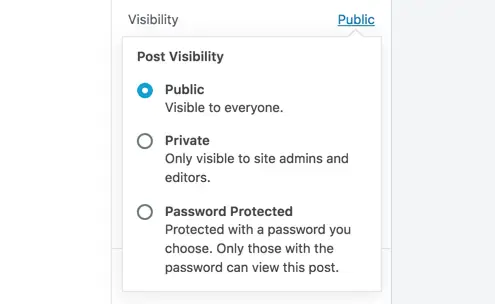WordPress之Gutenberg(古腾堡)自定义块扩展栏

本文内容主要参考 WordPress大学 以及 Gutenberg 开发API ,介绍并解读新版WordPress所采用的 Gutenberg 编辑器 _( Block Editor/块编辑器 )_如何创建自定义编辑块,包括块的样式以及扩展工具栏等。
本文适用于WordPress 5.2.2。关于WordPress Gutenberg自定义系列目录如下:
1、WordPress之Gutenberg(古腾堡)自定义块(一)
2、WordPress之Gutenberg(古腾堡)自定义块(二)
3、WordPress之Gutenberg(古腾堡)自定义块扩展栏
4、WordPress之Gutenberg(古腾堡)自定义块工具栏
对于Gutenberg(古腾堡)自定义块,实现预设好的固定单一样式是比较简单的;但如果想更改如字体大小的样式,预设则显得较为困难。所以引入扩展栏,能使我们能更自由地更改自定义样式。本文利用之前自定义代码高亮的需求,自定义了一个带扩展栏的代码块。
效果截图
WordPress Gutenberg编辑器的扩展栏如上图所示,显示在右边的区块设置栏上,注意使用扩展栏时把设置 Ctrl+Shift+, 打开。
详细教程
Gutenberg(古腾堡)自定义块扩展栏主要步骤与创建自定义块步骤基本相同
- 在function中注册相关的脚本文件
- 编辑块Block以及扩展栏的JS文件
- 编辑块的css外观
步骤1与步骤3,分别在 WordPress之Gutenberg(古腾堡)自定义块(一) 和WordPress之代码样式更改中介绍过,而且在编辑时没用应用到css外观,所以在 function中注册相关的脚本文件就不用将css文件引入,css文件引入主题样式即可。
编辑块JS内容
引入js文件后,编写内容如下
1 | ( function( wp ) { |
在以上代码中,我们为自定义块“自定义代码”添加了 InspectorControls 元素以及 TextControl 和 RadioControl 两个组件。点击块时,将显示区块设置选项卡,选项卡内显示为编辑文本框和单选按钮。
语法解析
wp.editor.InspectorControls
自定义块扩展栏(即设置边栏)用于显示不常用的设置或需要更多屏幕空间的设置。设置边栏应仅用于块级设置,而且应该时用于块全局设置,而不是选定内容。wp.components.TextControl
TextControl组件允许用户输入和编辑文本 ,基本属性有:label:标签名help:提示语value:编辑框内容type:类型,默认texthideLabelFromVision:标签是否隐藏,默认falseonChange:接收输入值的函数
wp.components.RadioControl
RadioControl组件为单选框,基本属性有:label:标签名help:提示语selected:当前所选选项的value属性options:选项,以{label: '', value: ''}键值对组成的数组onChange:接收输入值的函数
wp.editor.PlainText
明文编辑框,由于本自定义块用于编写代码,所以不对输入文本进行转义,保留回车符,空行等格式。
该自定义块还使用了正则来获取当前块用到的类,用于更改区块样式,从而实现不同代码的高亮样式。对于Gutenberg(古腾堡)自定义块扩展栏可以根据个人需求,增加不同的组件来实现不同的功能。
WordPress Gutenberg其他相关自定义系列文章:
1、WordPress之Gutenberg(古腾堡)自定义块(一)
2、WordPress之Gutenberg(古腾堡)自定义块(二)
3、WordPress之Gutenberg(古腾堡)自定义块工具栏










